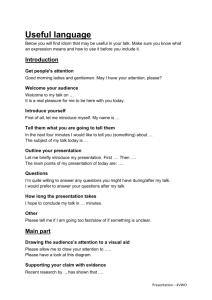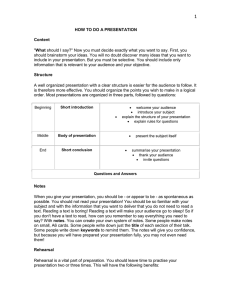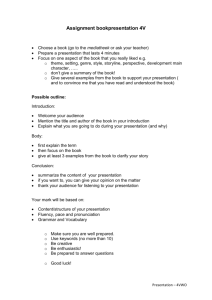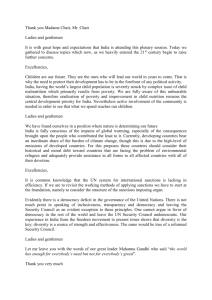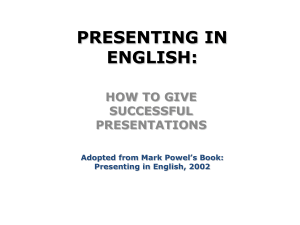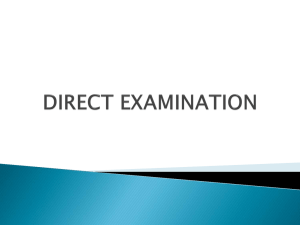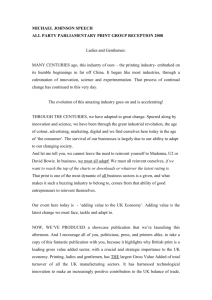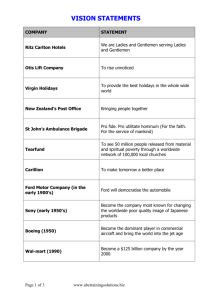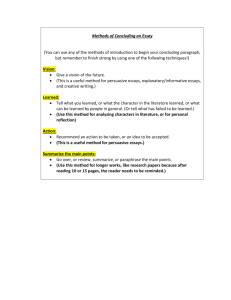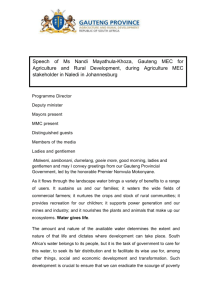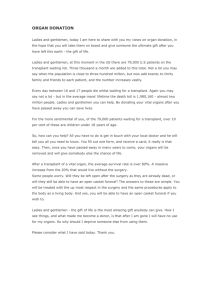The table below lists useful expressions that you can use to signpost
advertisement
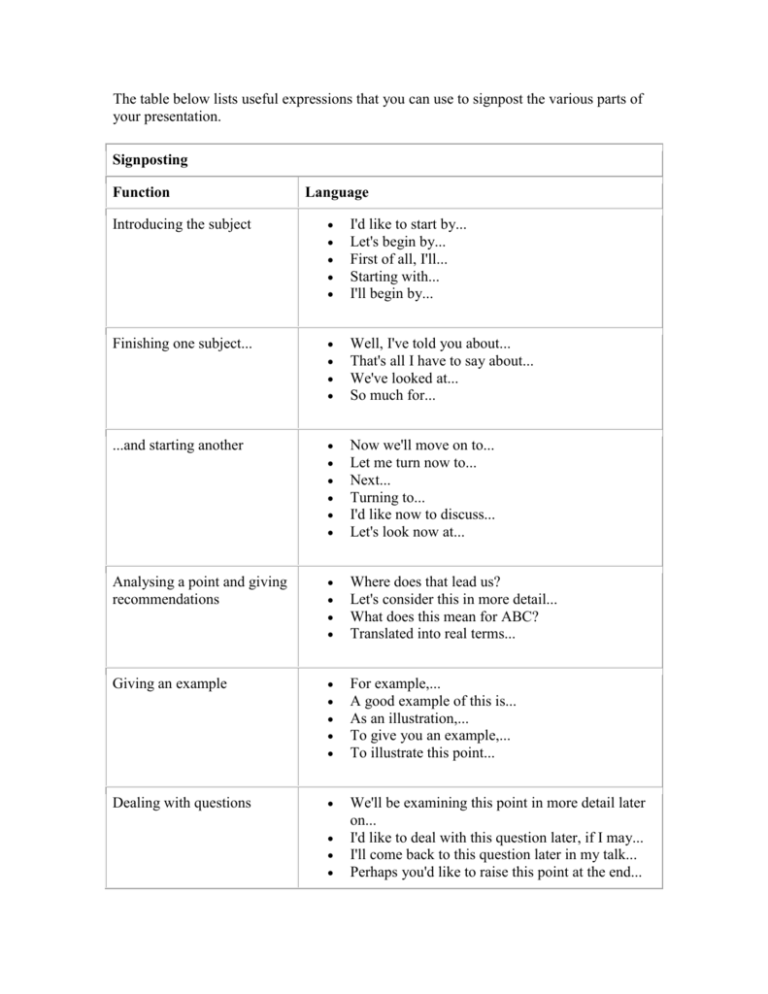
The table below lists useful expressions that you can use to signpost the various parts of your presentation. Signposting Function Language Introducing the subject I'd like to start by... Let's begin by... First of all, I'll... Starting with... I'll begin by... Finishing one subject... Well, I've told you about... That's all I have to say about... We've looked at... So much for... ...and starting another Now we'll move on to... Let me turn now to... Next... Turning to... I'd like now to discuss... Let's look now at... Analysing a point and giving recommendations Where does that lead us? Let's consider this in more detail... What does this mean for ABC? Translated into real terms... Giving an example For example,... A good example of this is... As an illustration,... To give you an example,... To illustrate this point... Dealing with questions We'll be examining this point in more detail later on... I'd like to deal with this question later, if I may... I'll come back to this question later in my talk... Perhaps you'd like to raise this point at the end... Summarising and concluding Ordering I won't comment on this now... In conclusion,... Right, let's sum up, shall we? I'd like now to recap... Let's summarize briefly what we've looked at... Finally, let me remind you of some of the issues we've covered... If I can just sum up the main points... Firstly...secondly...thirdly...lastly... First of all...then...next...after that...finally... To start with...later...to finish up... PRESENTATION Most presentations are divided into 3 main parts (+ questions): 1 INTRODUCTION 2 BODY 3 CONCLUSION Questions Questions INTRODUCTION The following table shows examples of language for each of these functions. You may need to modify the language as appropriate. Function 1 Welcoming your audience Possible language Good morning, ladies and gentlemen Good morning, gentlemen Good afternoon, ladies and gentleman Good afternoon, everybody 2 Opener I’d like to start by telling you a little story. I am very happy to see so many of you hear today. 2 Introducing your subject I am going to talk today about... The purpose of my presentation is to introduce... 3 Outlining your structure To start with I'll... Then I'll mention... After that I'll... Finally, I'll summarize my presentation (before concluding with some recommendations). 4 Giving instructions about questions Do feel free to interrupt me if you have any questions. I'll try to answer all of your questions after the presentation. I plan to keep some time for questions after the presentation. Body The body is the 'real' presentation. If the introduction was well prepared and delivered, you will now be 'in control'. You will feel relaxed and confident. The body should be well structured, divided up logically, with plenty of carefully spaced visuals. Remember these key points while delivering the body of your presentation: do not hurry be enthusiastic give time on visuals maintain eye contact modulate your voice look friendly maintain positive body language (hand gestures) keep to your structure use your notes signpost throughout remain polite when dealing with difficult questions Conclusion Use the conclusion to: 1. 2. 3. 4. Sum up (Give recommendations if appropriate) Thank your audience Invite questions The following table shows examples of language for each of these functions. You may need to modify the language as appropriate. Function Possible language 1 Summing up To conclude,... In conclusion,... Now, to sum up... So let me summarise/recap what I've said. Finally, may I remind you of some of the main points we've considered. 2 Giving recommendations In conclusion, my recommendations are... I therefore suggest/propose/recommend the following strategy. 3 Thanking your audience Many thanks for your attention. May I thank you all for being such an attentive audience. 4 Inviting questions Now I'll try to answer any questions you may have. Can I answer any questions? Are there any questions? Do you have any questions? Are there any final questions?
